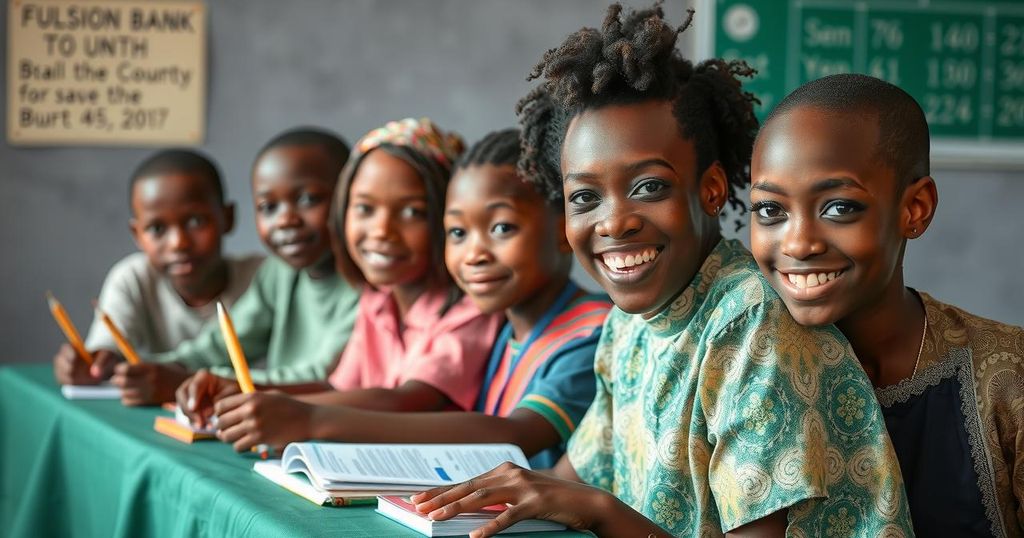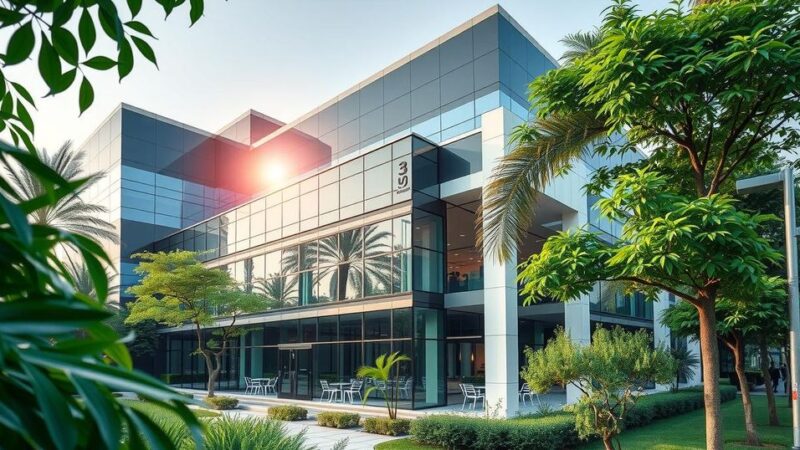The World Bank’s recent report reveals a substantial education funding shortfall in Sub-Saharan Africa, including Nigeria, where the average spending is only $54 per student, compared to $8,500 in high-income countries. Critical resource shortages further impede educational outcomes. The report emphasizes the urgent need for increased investment and reforms to provide equitable quality education, particularly for girls, to capitalize on the region’s youthful demographic and drive future economic growth.
According to the World Bank’s latest Africa Pulse Report, Sub-Saharan African nations, notably Nigeria, are facing a significant education funding deficit. The report highlights that these countries allocate an average of only $54 per student, starkly contrasting with the $8,500 spent in high-income countries. This discrepancy underscores the ongoing struggle to fulfill both national and global educational goals, despite nominal increases in funding for the sector. The lack of essential resources, including textbooks and technology, remains a critical obstacle to improving educational outcomes.
The World Bank indicates that a girl in Sub-Saharan Africa will attend school for an average of merely eight years by the age of 18, which is considerably lower than the 13 years in wealthier nations. Furthermore, the findings indicate that high-income countries invest approximately $117,000 per student by the age of 18, whereas Sub-Saharan Africa sees only $1,900 allocated per student. A significant portion of the educational budgets in these regions is consumed by salary expenditures, which leaves little funding available for critical educational resources and infrastructure improvements.
The World Bank warns that this ongoing underinvestment in education could jeopardize the economic prospects of Sub-Saharan Africa. With a burgeoning population, the region possesses a unique chance to overhaul its educational systems and leverage its youthful demographic. However, failure to make substantial investments to address the funding shortfall could hinder economic growth and human capital development significantly.
The Federal Government of Nigeria, along with 22 of the 36 states, has allocated N6.131 trillion for education in their 2025 budgets, which constitutes merely 9.27 percent of the planned total budget of N66.111 trillion. This allocation is alarmingly beneath the benchmarks recommended by Nigeria itself, along with the World Bank and UNESCO. Urgent initiatives are necessary to augment education funding, optimize resource allocation, and ensure that all children, particularly girls, receive a quality education that prepares them for successful futures.
The report further elucidates the economic benefits of additional schooling in Sub-Saharan Africa, stating that each extra year of education can boost individual incomes by 12.4 percent—higher than the global average of 10 percent—with women experiencing a 14.5 percent increase. The World Bank has urged governments in the region to prioritize reforms aimed at enhancing foundational literacy, aligning skills training to local economic needs, and facilitating transitions from education to employment. Considering that the working-age population in this region is anticipated to double by 2050, strengthening educational systems is essential for economic transformation.
The issue of inadequate educational funding in Sub-Saharan Africa, particularly in Nigeria, has garnered critical attention from international financial institutions. The World Bank’s latest report sheds light on the alarming disparities in educational investment, showcasing how Sub-Saharan African countries fall drastically short compared to wealthier nations. This underfunding is compounded by the lack of necessary resources that are essential for effective learning and development. The report highlights that while there are some increases in spending, they are insufficient to meet both national and global educational standards. Addressing these deficits is vital for the region’s economic future, especially considering the demographic opportunities presented by a young and expanding population.
In conclusion, the World Bank’s Africa Pulse Report highlights a critical education funding gap in Sub-Saharan Africa, particularly in Nigeria, which poses significant risks to the region’s economic outlook. The stark contrast in student spending between low-income and high-income countries illustrates the urgent need for increased investment in education. Without a concerted effort to allocate adequate funds and essential resources, Sub-Saharan Africa may struggle to harness its youthful demographic potential, thereby hindering future economic growth and development. Immediate action is paramount to ensure equitable access to quality education for all children, which will ultimately contribute to sustainable economic progress in the region.
Original Source: punchng.com






